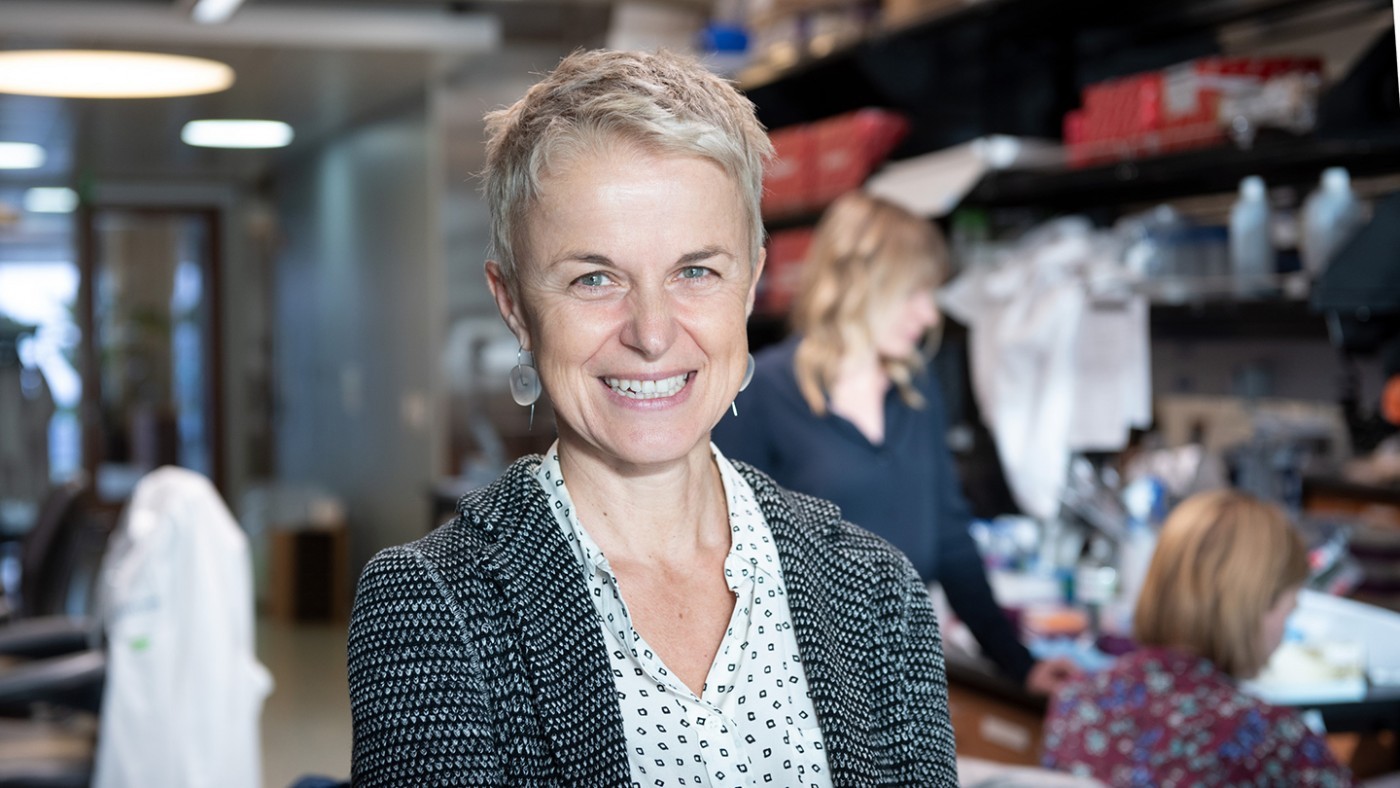They report, in a study published in the journal Cell, that targeting these processes with drugs may treat not only COVID-19 infections, but other existing and future coronaviruses.
“What is unique about our study is that we didn’t just look at SARS-CoV-2, but other coronaviruses at the same time,” says one of the leaders of the study, Melanie Ott, MD, PhD, director of the Gladstone Institute of Virology. “This gives us a good idea of drug targets that could broadly suppress many coronaviruses.”
A large family of viruses, coronaviruses include common cold viruses as well as more severe viruses. The SARS-CoV virus that caused a deadly SARS epidemic in 2002 was a coronavirus, as is the MERS virus, which has caused outbreaks in the Middle East.
“There have now been multiple coronavirus outbreaks, so it’s clear this virus family has high pandemic potential,” says Andreas Puschnik, PhD, a principal investigator at the Chan Zuckerberg Biohub and the other leader of the study. “COVID-19 is not the last coronavirus infection we’ll be dealing with.”
Comparing and Contrasting Coronaviruses
Like all viruses, coronaviruses can only grow inside host cells; they rely on the host cell’s molecules to multiply. Because of this, the team of researchers want to target human molecules that the viruses use to survive, rather than components of viruses themselves.
In the new study, they infected human cells with either SARS-CoV-2 or two other coronaviruses that cause common colds—and all three viruses killed the cells. Next, the team of researchers mutated the cells using CRISPR-Cas9 gene-editing technology and studied which mutations made the cells less vulnerable to the coronaviruses.
“We reasoned that the few cells that could survive these infections presumably had mutations in host molecules that the viruses use to infect them or to multiply,” explains Puschnik.
Some results were not surprising. For instance, the human ACE2 receptor is known to be required by SARS-CoV-2 to enter human cells. So, cells with a mutation in the ACE2 gene were no longer infected or killed by SARS-CoV2.
But other findings were less expected. The researchers found that certain genetic mutations prevented all three coronaviruses from successfully infecting and killing the cells. These were mutations in genes known to control the balance of two types of lipid molecules in human cells, namely cholesterol and phosphatidylinositol phosphate (PIP).
Cholesterol is needed for some viruses to enter cells, but it hadn’t been studied in the context of coronaviruses when this study started. Similarly, PIP is known to play a role in forming the small vesicles that viruses often use to travel into and around cells, but it had not been directly linked to SARS-CoV-2 before.
A Pathway toward Therapeutics
To verify the importance of the cholesterol and PIP genes for coronavirus infection, the researchers engineered human cells that lack these genes completely and infected them with the virus. Cells lacking the genes were protected from infection by all three coronaviruses. Similarly, when the team used existing compounds to disrupt the balance of PIP or cholesterol, the cells were less susceptible to infection by any of the viruses.
These results suggest that targeting cholesterol or PIP could be a promising strategy to combat multiple coronaviruses.
“For viruses, the traditional view has been that we design drugs against unique viral targets, and that means it takes time to develop a drug each time there’s a new virus,” says Ott, who is also a professor in the Department of Medicine at UCSF. “If we could develop a few broader antiviral drugs that target host cells’ molecules, that would go a long way toward making us better prepared for future pandemic viruses.”
Not all results were the same between the three studied viruses, however. Some human molecules required for SARS-CoV-2 infection weren’t needed by the two common cold coronaviruses, and vice versa. These findings could help explain what makes SARS-CoV-2 more deadly than the other two viruses.
More work is needed to test the effectiveness of drugs targeting PIP and cholesterol, and whether they can effectively stop viral growth without causing dangerous side effects. The team would also like to repeat the screens using other coronaviruses—including the first SARS-CoV and MERS viruses—to determine just how universal the new targets they pinpointed are.
Ott and Puschnik agree that the current study was made possible by researchers from many labs coming together without hesitation. Puschnik has expertise in studying viral host factors, but didn’t have access to a Biosafety Level 3 (BSL-3) lab required to work with SARS-CoV-2. Ott was spearheading Gladstone’s effort to open such a lab earlier this year and offered to collaborate. Scientists at Synthego provided the engineered cells needed to study the viruses, and Gladstone Senior Investigator Nevan Krogan, PhD, helped analyze the results of the CRISPR-Cas9 screen.
“Everybody was completely willing to roll up their sleeves, pool resources, and work together to help contribute to better understanding COVID-19,” says Puschnik."



